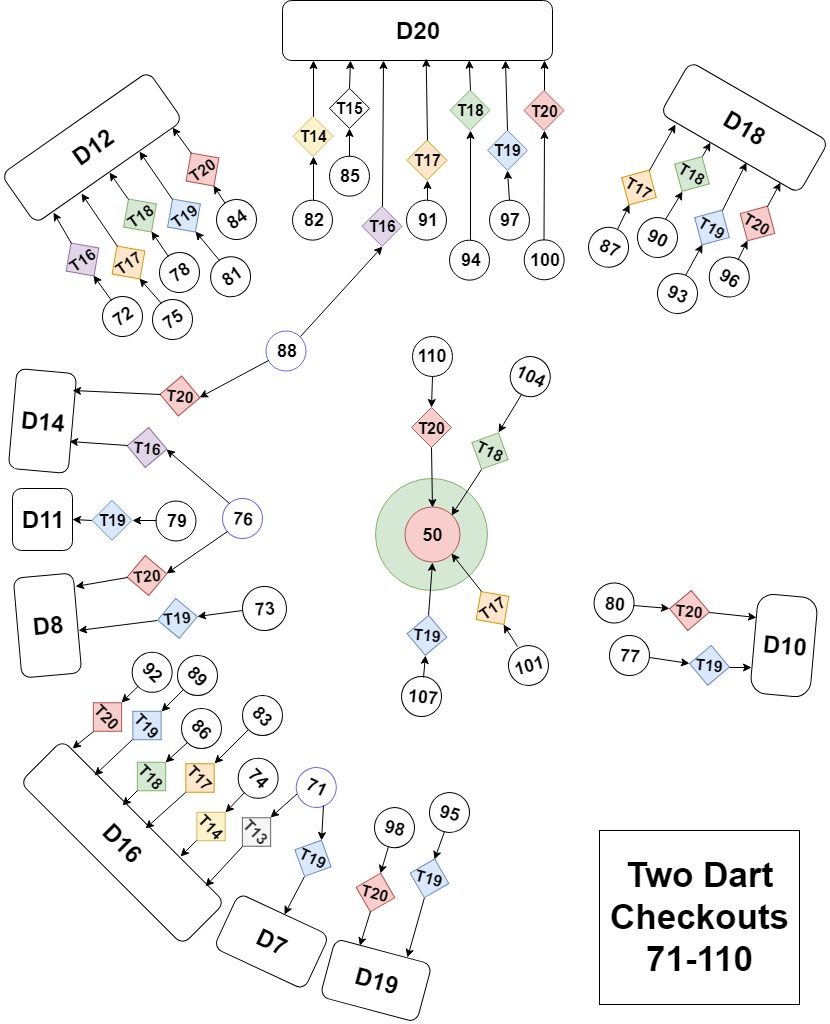The first dart is the sledgehammer, pounding the big treble to create the possibility of a big checkout. The final dart gets all the glory, smugly sitting the the bed of the chosen double for the win. Ah, but the middle dart. It’s the middle dart that is the key to victory. It’s the middle dart that transforms possibility into opportunity.
For any big checkout, your first dart is obviously important but it’s your second dart that will determine if you get a shot at a double. Learning, and practicing, the two dart outs will not only make you a better dart player, it will give you the confidence to take out larger checkouts.
With two darts in hand, you can take out 110, 107, 104, 101, 100 and anything less than 99. For 70 or less, the rules are simple. For 71 and up, you’ll need to commit the best routes to memory.
If your score is 60 or less, throw the single that leaves you on a preferred double for your last dart, e.g., if you have 54, throw a single 14 to leave 40.
For 61-70, you should either throw the single that will leave you 50 for the final dart, or the treble of that number to leave an outer ring double. For example, if you have 65 remaining, a treble 15 will leave you with 20, but a single 15 still leaves you a shot at double bull to win. [Practice Routine]
For 71-100 (excluding 99), you will need to hit a treble to leave a double for your final dart. For 101, 104, 107 and 110 your only option is to finish on a double bull and you’ll need to hit a big treble to get that chance. (There are a few situations where double-double is a reasonable option, but that will depend on your skill level and whether your opponent is on an out.)
The graphic below shows you the recommended paths to a double with two darts remaining.

Although there may be other ways to checkout some of these scores, the paths above are the most common and straightforward and constitute key way-points when planning how to checkout larger scores. For instance, once you learn the two dart out for 89 is treble 19, double 16 (57-32), the checkouts for 149 and 109 become obvious – with 149 a treble 20 gets you to 89 and with 109 you can safely throw for a treble 20 knowing a single 20 leaves you with 89.